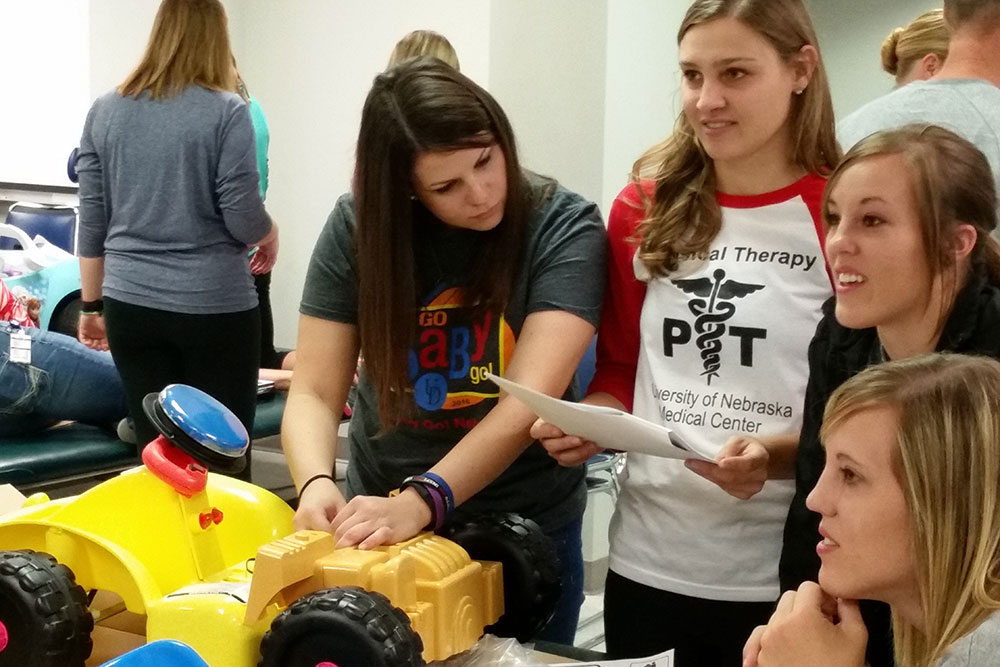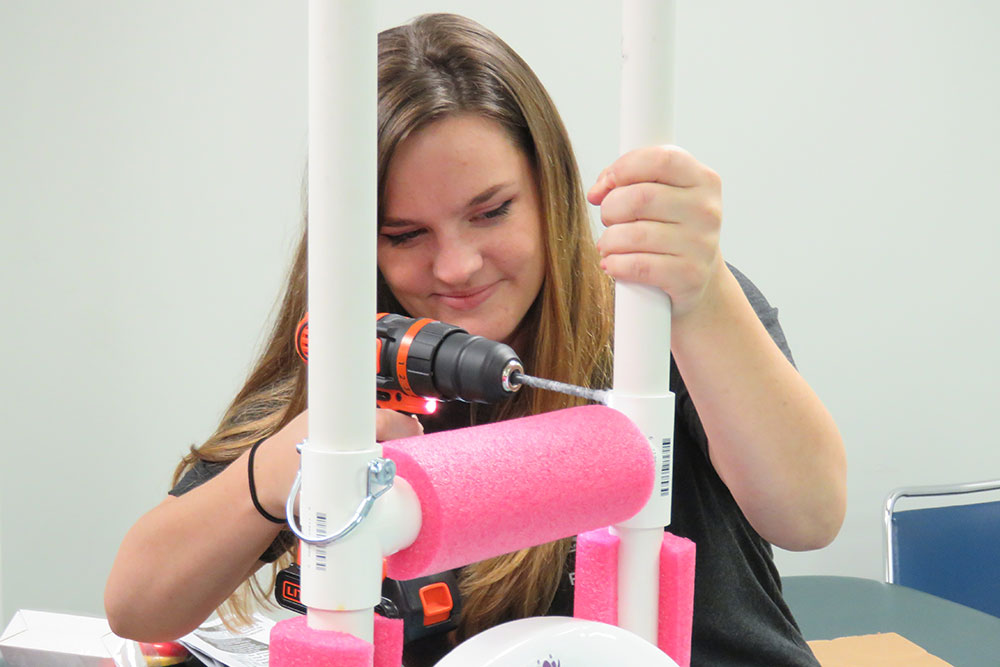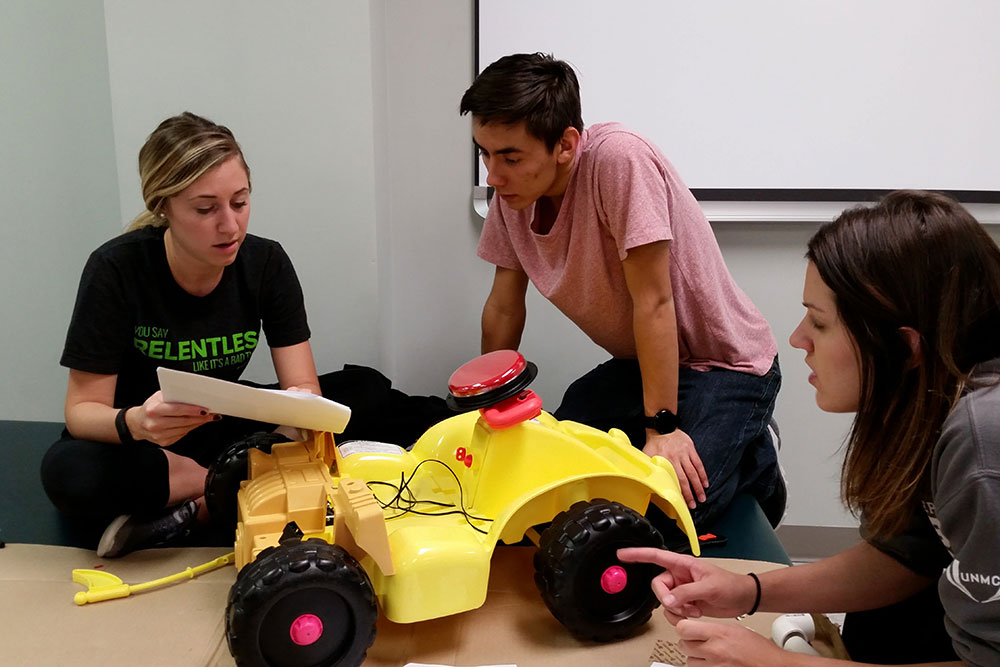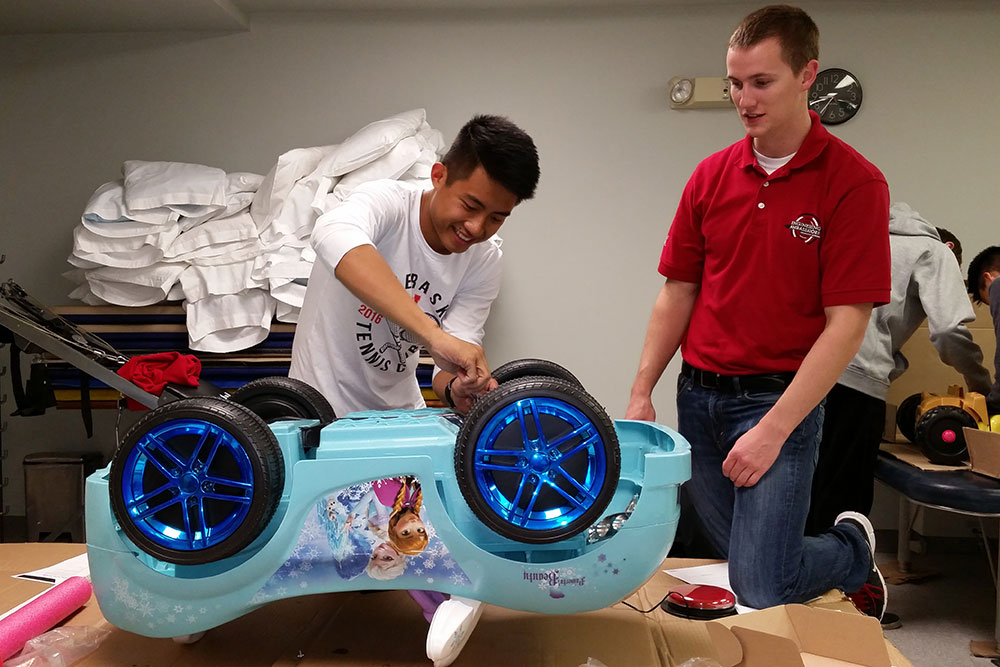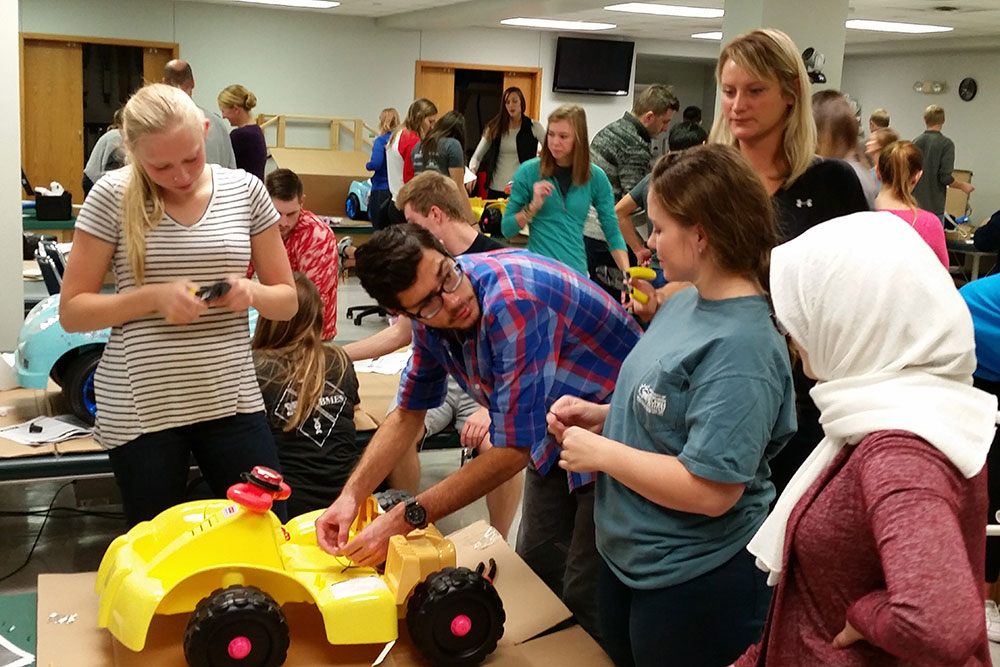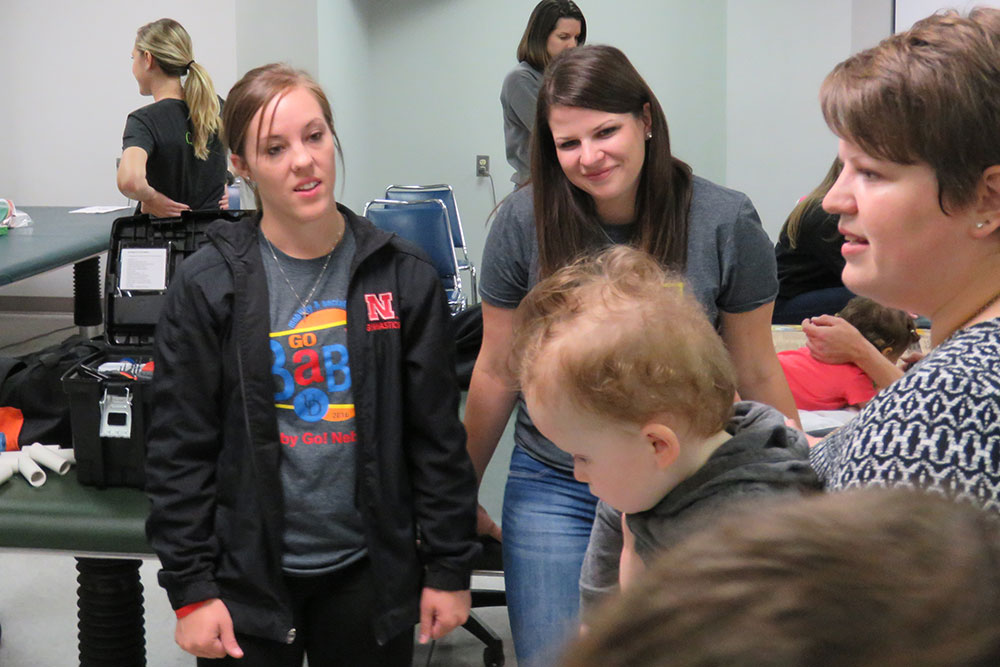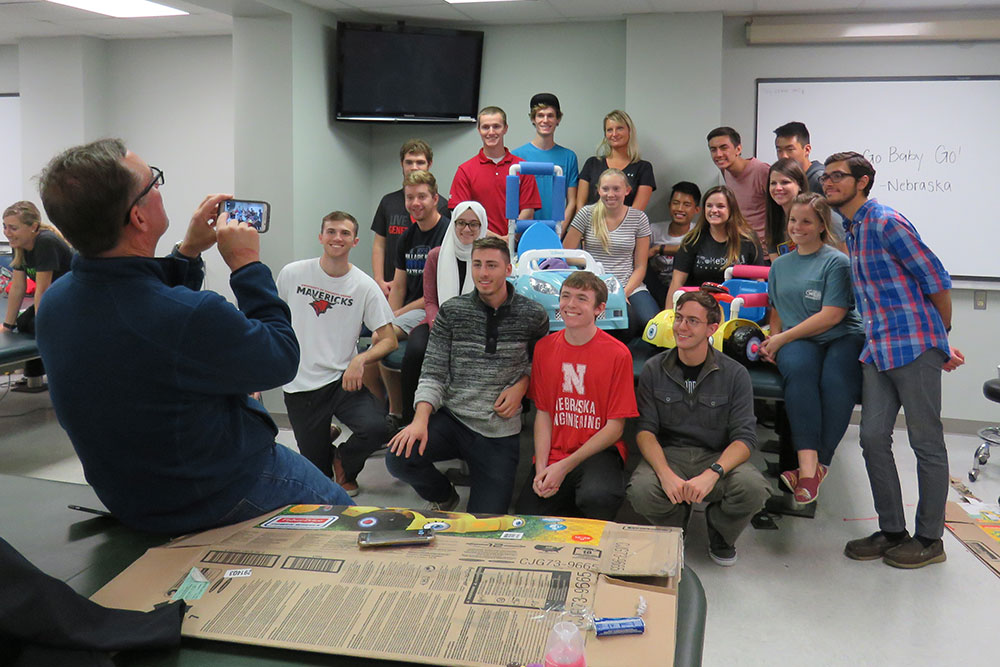Calendar Icon
Nov 02, 2016
Person Bust Icon
By Karl Vogel
![]() RSS
Submit a Story
RSS
Submit a Story
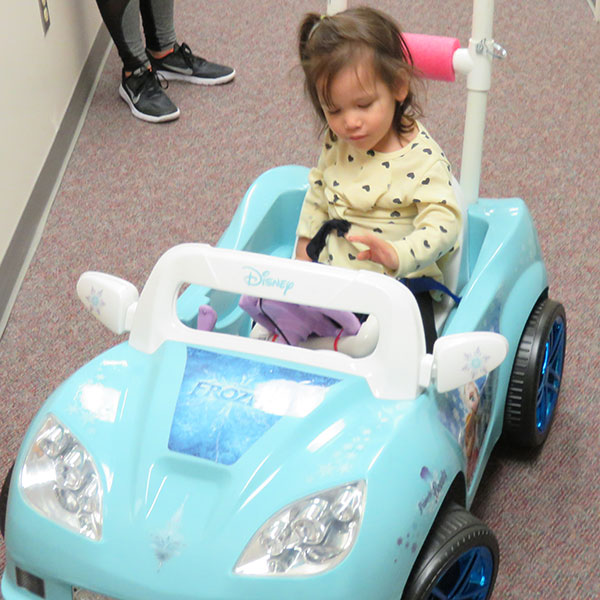
RELATED LINKS
The tears were almost as plentiful as the smiles on the Saturday morning that started Fall Break.
A team of Nebraska Engineering students joined physical therapy students from the University of Nebraska Medical Center for Go Baby Go, a project that renovates and retrofits electric toy cars to help brighten the futures of nine families of toddlers with mobility difficulties.
However, the 50 students discovered their work on the Go Baby Go project has opened up their futures as well.
"I was definitely crying a lot," said Kate Watts, a graduate student in biological systems engineering. "You can see the tangible evidence of everything your work is doing."
Go Baby Go, which began at the University of Delaware, aims to get children with Down Syndrome, spina bifida, cerebral palsy and other mobility-limiting conditions, moving on their own. Most commercially available power wheelchairs for children are designed ages 3 and older.
The earlier children can determine their own movement and not rely on someone else's help, the better it is for them in the long run, said Sandra Willett, interim director of physical therapy at UNMC's Munroe-Meyer Institute.
"It doesn't matter how you move as long as you understand that you have control of that movement," Willett said. "Some children have very weak bodies or impaired coordination that limits movement. We want to get them moving as early as they can so they can explore their world because that's how babies learn. Cognition and movement are closely linked in the first three years."
Willett had a willing work force in the UNMC senior physical therapy students, but they didn't have the expertise to make the changes in the cars to meet the needs of the children. The cars come with foot-pedal switches that cause the cars to move. But, Willett said, that set-up often doesn't work well.
"Our kids may not be able to selectively activate that switch with their foot," Willett said. "So we adapt the steering wheel with an easy access switch that can make the car go with a light touch."
This past spring, Willett pitched Go Baby Go to Watts, who was working with a UNMC team on a separate senior capstone project. Watts contacted Jeffrey Woldstad, professor of biological systems engineering, and enlisted help from him and from members of the student chapter of Biomedical Engineering Society (BMES).
Woldstad, who specializes in whole-body ergonomics and rehabilitation engineering, said the biggest benefits of this collaboration are not tangible.
"The multidisciplinary part – for engineers, it's being able to go and see what PTs do and then being actually able to build something for people to use right now – that's powerful," Woldstad said. "
"The hardest part of being an engineering student is the science and the math and the constant learning without ever seeing the end of what you're going to do. With this, they see the end."
In early August, Watts and two other Nebraska Engineering students, joined a group of physical therapists – under the direction of Sam Logan from Oregon State University – for the first Go Baby Go training build. Through grants from the Munroe-Meyer Guild and Olsson Associates, a Nebraska-based engineering firm, UNMC acquired eight cars and tools and materials for the conversions, including PVC pipes and plastic foam swim noodles.
The building of the cars took eight hours, including three hours of introductory instruction.
For October's second build-giveaway event, the number of engineers participating increased to 20, including at least five first-semester freshmen.
Teams – typically consisting of one engineer and four physical therapists -- gathered around therapy tables at 8 a.m. and began working on the nine cars to be given away.
One team of five Nebraska engineers worked on a "SpongeBob Square Pants" car as part of a yearlong senior design capstone project. Woldstad said that team addressed many issues with the cars, including making steering and operating the cars easier for the children.
Around 11 a.m., families began to arrive and the children were introduced to their cars.
Jose Delgado couldn't stop smiling after watching his 25-month-old daughter, Juliana, operate a "Frozen"-themed car.
"It's going to allow her to move around. She's not mobile and she has limited vision. Because of her special needs, she can't have any normal kids' toys," Delgado said. "This will allow her to go places she hasn't been. It will allow us to go outside and take walks and not have to use a stroller or carry her around.
"For her to do things on her own, it's exciting. It's like the way I felt when she was born."
Colleen Ogburn of Bellevue, wiped away tears as she watched Zeke, her 15-month-old son with spina bifida, learn to push the button that moved his "SpongeBob" car down a hallway.
"This is pretty awesome," Ogburn said. "His mobility is quite limited right now. I'm just thankful he'll be able to be outside and play with his sister. It's cool to us that he's not just laying around watching everybody, he can interact.
"It helps me, physically, to not have to carry him around everywhere. It helps him because he will be able to play on his own. This is awesome. He's really going to be able to have some adventures now."
Moments like those helped convince Watts that engineering is the path for her future.
"In my head, becoming a doctor was the natural way of helping people, so I had my eye on medical school. This was another opportunity to explore that engineering side. That's kind of why I jumped on the Go Baby Go train," Watts said.
"Since then, I've decided not to apply to medical school. Through interactions like this, it made me realize that in engineering you can still have that direct connection."
Watts also hopes she can remain affiliated with Go Baby Go and the program continues, not only for the families who receive the cars, but for the students.
"Anytime you go to work at a business or go to a school, when you leave you want to leave something behind," Watts said. "Dr. Woldstad and Sandy and I have talked about the next steps, and it's about finding funding so it can be an organization that can continually do this. I want to be a part of that and want it to be set at UNL so it can keep going for years and years."
Submit a Story
